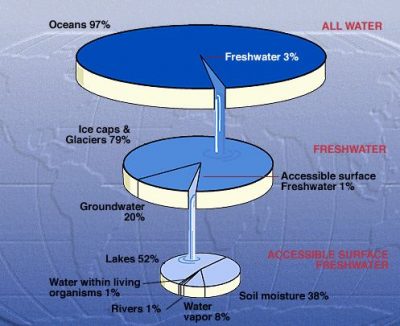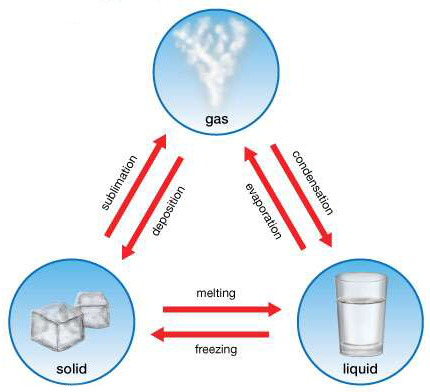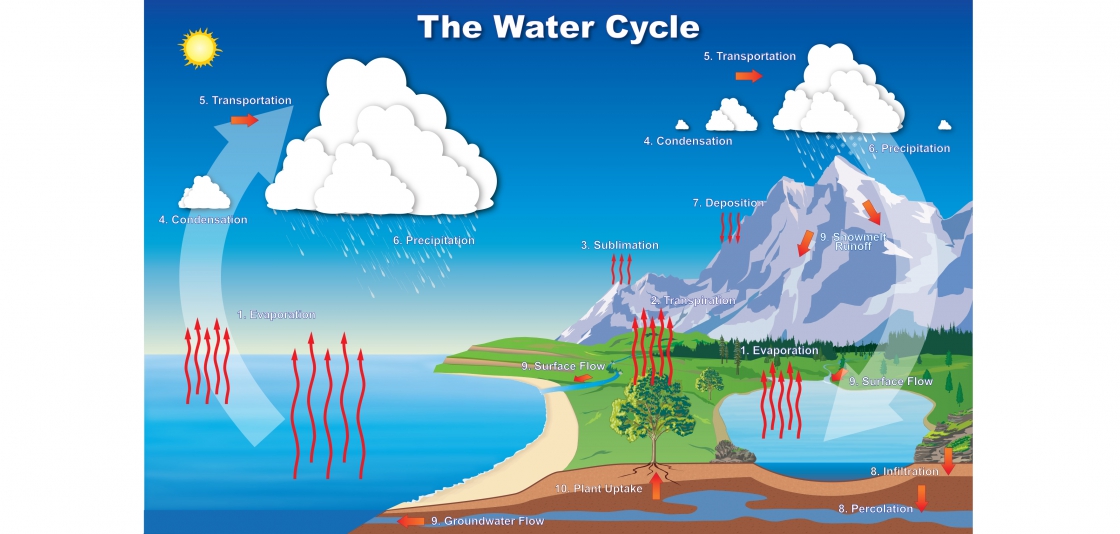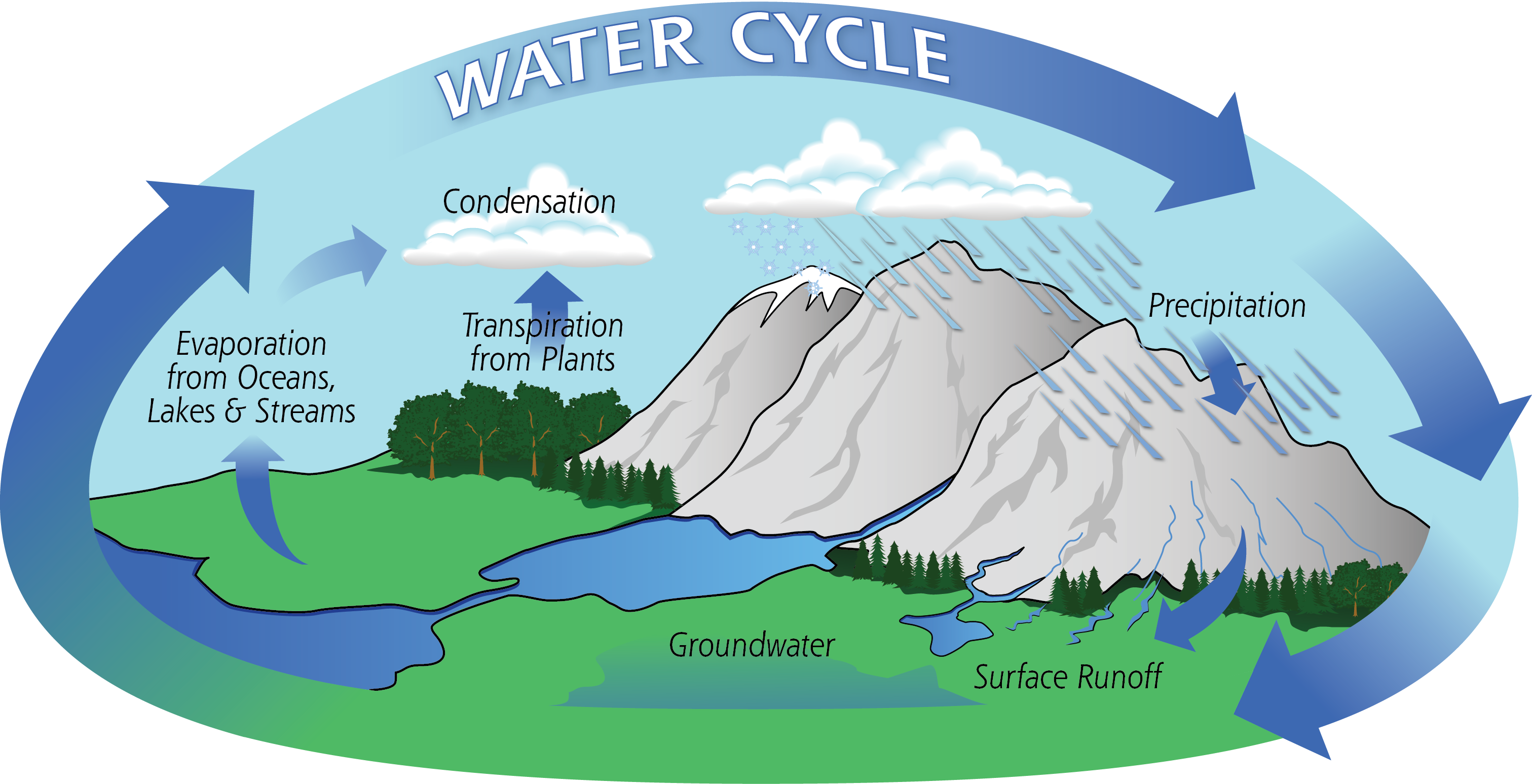Total Water vs. Freshwater
If all of the Earth’s water from oceans, icecaps and glaciers, lakes, rivers, groundwater and the atmosphere were collected in one place, the total volume would equal approximately 332.5 million cubic miles (mi³), where one cubic mile equals more than 1.1 trillion gallons. Of that total volume, 97% is saline water in oceans, meaning only 3% (about 22,339 mi³) is freshwater. Of that freshwater portion, approximately 69% is frozen in glaciers and ice caps, 20% is groundwater and only 1% is accessible surface freshwater. Of that 1% of accessible surface freshwater, only about 53% is located in lakes and streams (Shiklomanov, 1993; U.S. Geological Survey [USGS], 2016). Therefore, water in freshwater lakes and streams is about 52% of the 1% accessible water, of the 3% of the total which is freshwater, or only 0.015% of the total water in the Earth!




